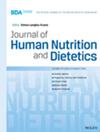Barriers and Practices in Food Reintroduction Following Exclusive Enteral Nutrition in Chinese Teenagers With Crohn's Disease: A Multi-Perspective Qualitative Study
Abstract
Background
Food reintroduction is a critical step for teenagers with Crohn's disease (CD) transitioning from exclusive enteral nutrition (EEN) to a normal diet. However, no standardized protocol currently guides this process. This study aimed to explore the barriers and practices of food reintroduction from the perspectives of teenagers, their caregivers and healthcare professionals in the Chinese context.
Methods
A descriptive qualitative design was adopted. Purposive sampling was used to recruit participants, including teenagers with CD, their caregivers and healthcare professionals. Semi-structured interviews were conducted to collect data on food reintroduction barriers and practices. Conventional content analysis was used to analyse the interview transcripts.
Results
A total of 25 participants completed 24 interviews. Four themes emerged regarding barriers: absence of specific dietary guidance, poor food acceptance by teenagers, unreasonable dietary control by caregivers and school environment limitations. Three themes were identified regarding practices: principles of food reintroduction, time of food reintroduction and application strategies of partial enteral nutrition.
Conclusions
This study underscores the need for a structured protocol for food reintroduction in Chinese teenagers with CD from the perspectives of patients, caregivers and the IBD healthcare professionals, exploring the variability in the barriers and practices related to individual preferences, caregiver approaches, healthcare professional guidance and school environments. The findings may provide valuable insights for the development of future food reintroduction protocols.

 求助内容:
求助内容: 应助结果提醒方式:
应助结果提醒方式:


